Folk remedies for yellowing cucumber leaves
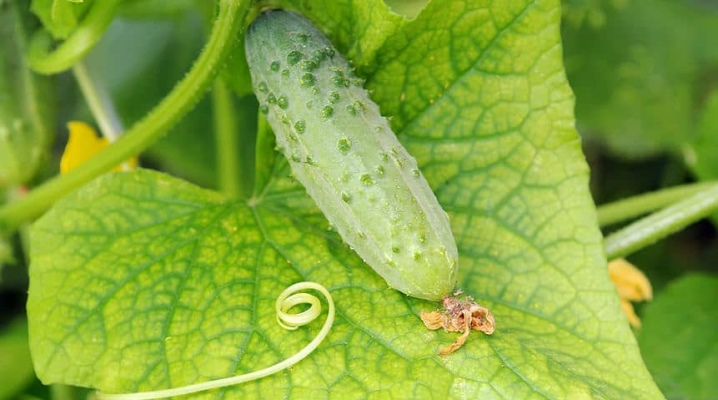
The most common problem in the cultivation of cucumbers is the yellowing of the leaves. When the first signs of yellowness appear, the cause should be identified and remedied as soon as possible.
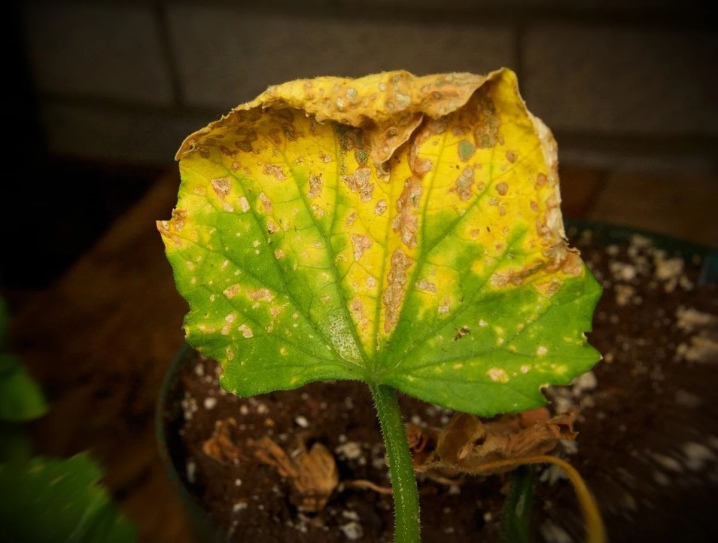
Causes
The yellowing of leaves in cucumbers is caused by a violation of the process of photosynthesis and, as a result, a decrease in the production of chlorophyll. There may be several reasons for such a failure, and the result is always the same - it is wilting, and in more advanced cases, the death of the plant.
The change in the color of the green part of the bushes can occur in several cases.
- With nutritional deficiencies. In order to understand why the leaves turned yellow, you need to carefully examine the leaf blade and touch it. So, with a nitrogen deficiency, the leaf first turns pale, then acquires a yellowish tint, after which it folds the edges down. With a lack of calcium, the picture is somewhat different: the plate turns yellow, as with a burn, deforms and falls off. If there is not enough magnesium, the leaves become covered with yellow-green spots, after which they dry out and fall off.
- From non-compliance with the optimum temperature and in violation of the irrigation regime. With a lack of sunlight, the lower leaves are especially affected, which eventually turn yellow and die off. With a lack of watering, the leaf blades become flabby to the touch and slowly turn yellow. With an overabundance, the root system is affected by rot, which also leads to yellowing and leaf fall.
- Invasion of pests which suck the juice from the leaves, which is why they quickly lose moisture and turn yellow.
- In diseases caused by fungal infections and plant viruses, yellow spots of various shapes and sizes form on the surface. Fusarium, late blight, peronosporosis and bacteriosis should be noted among the most common fungal diseases. Among viral infections, cucumber mosaic predominates, characterized by a yellow-green mosaic pattern.
- With putrefactive lesions and root injuries the absorption of moisture and nutrients is impaired and the leaves begin to turn yellow.
- Yellowing of leaves after the end of the growing season is quite predictable and natural and does not require any measures. The annual plant sheds its leaves and withers.
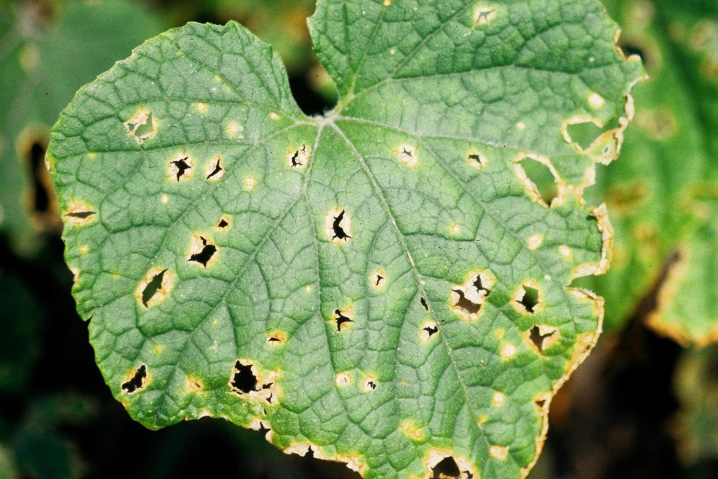
As for the seedlings, they may turn yellow due to too tight containers and high humidity in the room. Young shoots should be grown in spacious containers and ventilated regularly.
What to do if there is not enough power?
Cucumbers react to an insufficient amount of nutrients quite quickly: the leaves begin to turn yellow and flabby, giving the bush a painful appearance. In such cases, it is necessary to urgently start treating the plant, otherwise a good harvest may not be expected. For feeding cucumbers, both folk remedies and ready-made chemicals are used.
As a chemical feeding, take 10 g of ammonium nitrate, potassium sulfate and superphosphate, dilute them in 10 liters of water, pour the cucumbers with the resulting solution. Watering should be strictly at the root, being careful not to spray the solution onto the leaves and burn them. Good results are obtained by root and foliar treatment of cucumbers with a solution of urea, taken in a proportion of 50 g / 10 l of water. If you spray the green parts of the plant with such a mixture, then many cucumber pests will go away forever.

From folk methods, infusion of mullein, brilliant green, serum with iodine, herbaceous infusions and ash are widely popular.
- Mullein used in case of a lack of nitrogen in the soil and to combat powdery mildew. To do this, 1 kg of manure is placed in a 3-liter jar of water, infused for three days, filtered and mixed with 7 liters of water. The solution must be mixed well, and then the plants must be treated. If the plants are deficient in potassium, then you can use the following mixture: 300 g of wood ash and 200-300 g of dry manure are poured with a bucket of cool water, mixed thoroughly and infused for a day. Then the liquid is filtered and once a week, one liter is added under each bush.
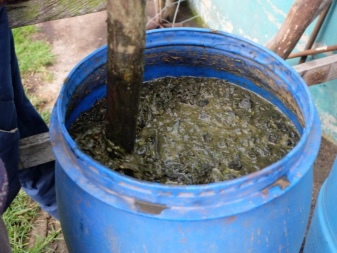
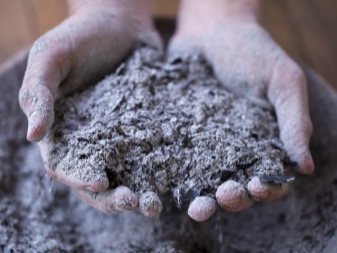
- Zelenka promotes the accumulation of copper, the establishment of intercellular exchange processes, increases the production of chlorophyll. To prepare a solution for watering, add 10 drops of greenery to 10 liters of water. If you plan to spray, then take 5 ml of greenery for 10 liters of water. Processing is carried out no more than twice a month.
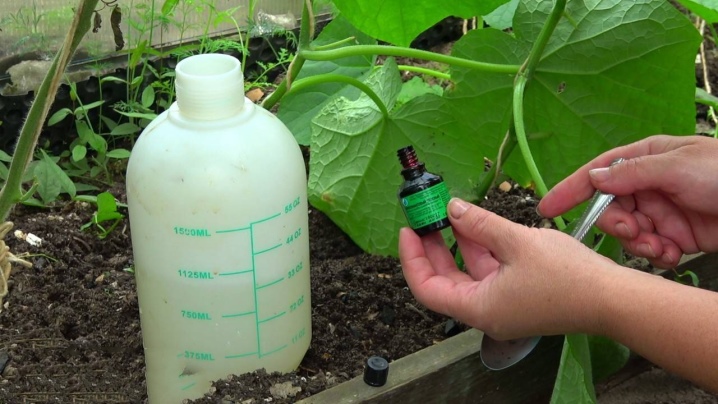
- Wood ash contains a large amount of trace elements, so you need to use it for watering cucumbers once every 10 days throughout the growing season. For this, 3 tbsp. l. ash is poured with three liters of boiling water and insisted for two days. Then the plant is filtered and processed.
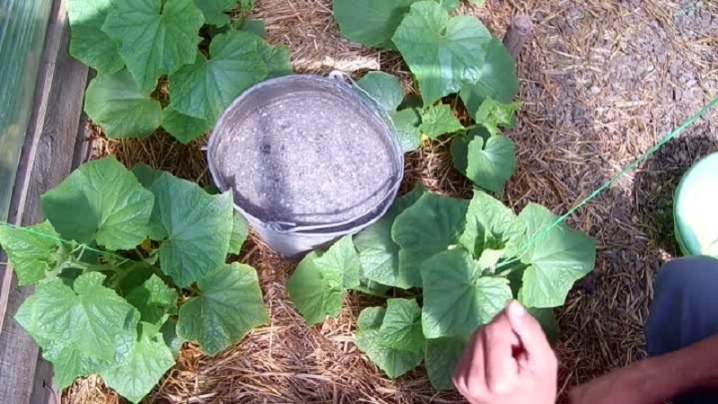
- Iodine and serum fill the soil with lactobacilli, trace elements, destroy the pathogen of powdery mildew and help get rid of yellowing of the leaves. To prepare the solution, take 2 liters of serum, 30 drops of iodine and 10 liters of water. Processing is carried out 2 times a month. To stimulate the development of ovaries and improve the taste of cucumbers, iodine can be replaced with a glass of granulated sugar.
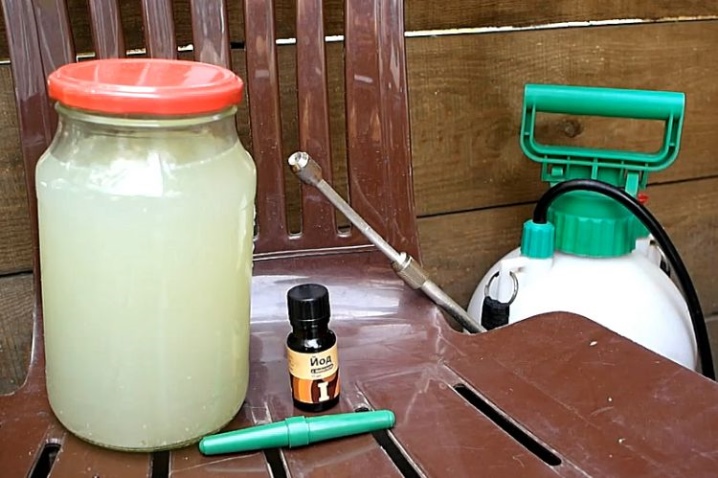
- Infusion of herbs used both for watering and for spraying bushes. With a potassium deficiency, you can feed the plants with comfrey infusion. To do this, 1 kg of chopped grass is poured with ten liters of water, infused for 7 days and filtered. Then they take a liter of infusion, dilute it in 9 liters of water and start processing.
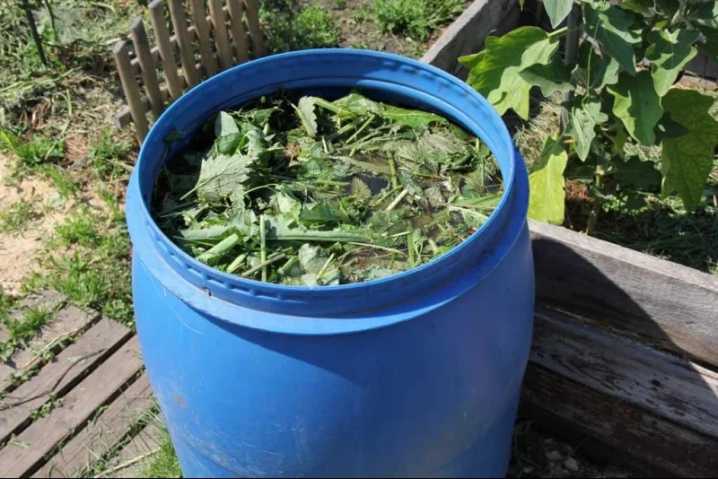
How to treat diseases and pests?
The main enemies of the cucumber are fungal and viral diseases. To combat them, the chemical preparations Jet, Tiovit, Fitosporin and Topaz are used. These remedies have worked well in the treatment of cucumbers, as they destroy spores and mycelium. If fungal diseases are detected during the budding period, the bushes can be sprayed with a 1% solution of Bordeaux liquid, 1% solution of colloidal sulfur or 0.5% solution of copper sulfate.
After the appearance of the ovaries, it is recommended to use folk methods.
- Soda is an affordable remedy and perfectly destroys fungal spores. To prepare the solution, take 5 liters of warm water, 1 tbsp. l. vegetable oil, the same amount of soda, add an aspirin tablet and mix well. Processing is carried out in the evening after sunset.
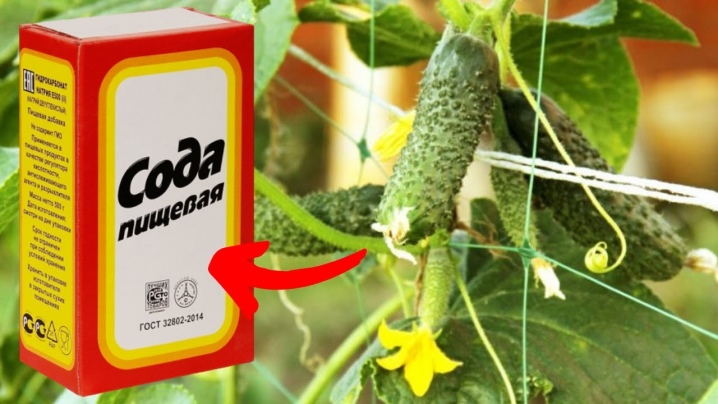
- Potassium permanganate used for spraying bushes at the first sign of illness. To do this, a 1% solution is introduced, while controlling that all crystals are dissolved in water.
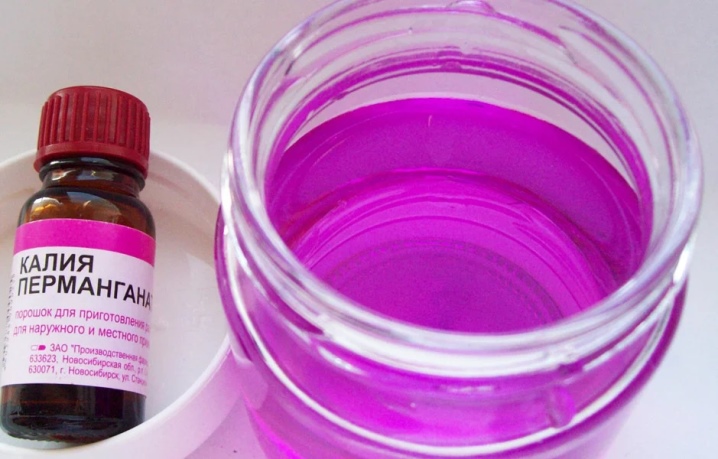
- Garlic infusion is used to combat viral diseases. For this, a glass of chopped garlic is poured with 200 ml of water, insisted in a dark place for 10 days and filtered. Then 3 tbsp. l. the resulting infusion is diluted in 10 liters of water, 3-4 tablespoons of liquid soap are added and cucumbers are sprayed.
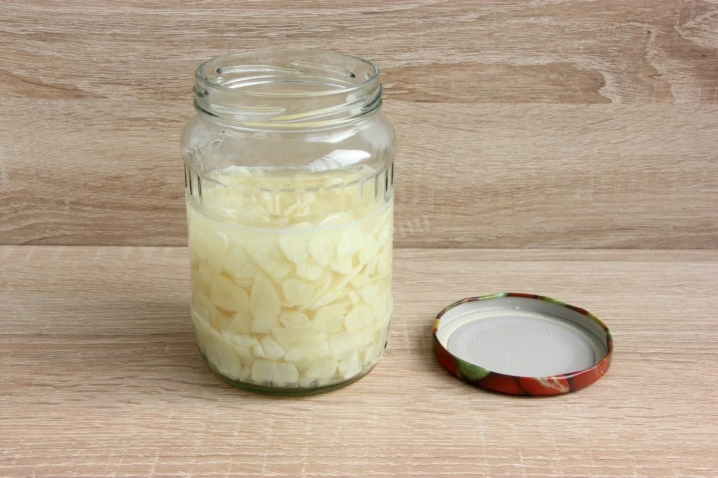
- Serum with greens helps well against peronosporosis. For this, 50 g of carbamide, 2 liters of whey and 10 ml of greens are diluted in 10 liters of water. Leaves are processed 3 times a month.
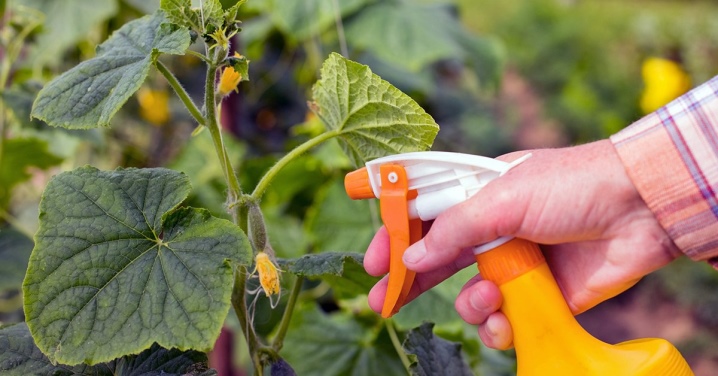
- To get rid of powdery mildew Trichopolum is often used. To do this, put one tablet in each well during planting. For the treatment of adult bushes, 5 tablets of trichopolum are placed in a bucket and the soil is watered. To spray the leaves, take 2 tablets per liter of water.
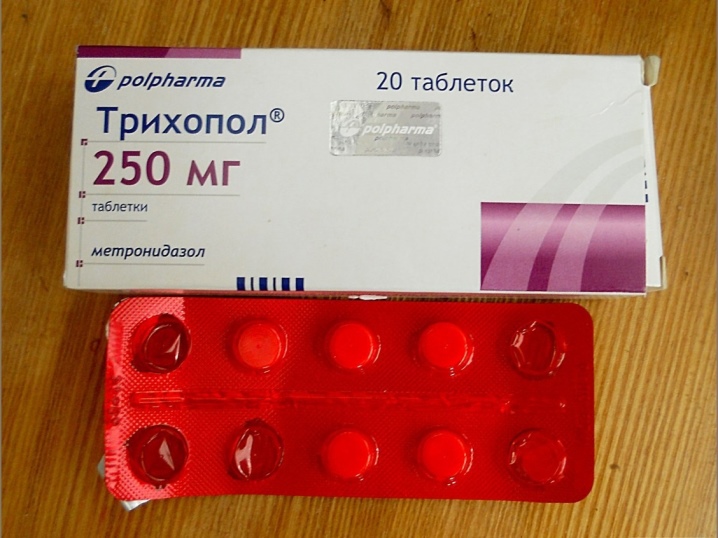
Among pests, the whitefly and spider mite pose the greatest threat to cucumbers.
To combat them, they use Fitoverm, Antiklesh, Intavir, Karbofos, Aktara and Apollo. You can also use colloidal sulfur, 80 g of which must be diluted in a bucket of water. Treatment should be carried out every 5 days until the pests disappear completely. Aphids kill well "Nitroammofoska", taken in a proportion of 2-3 ml / 10 l of water.
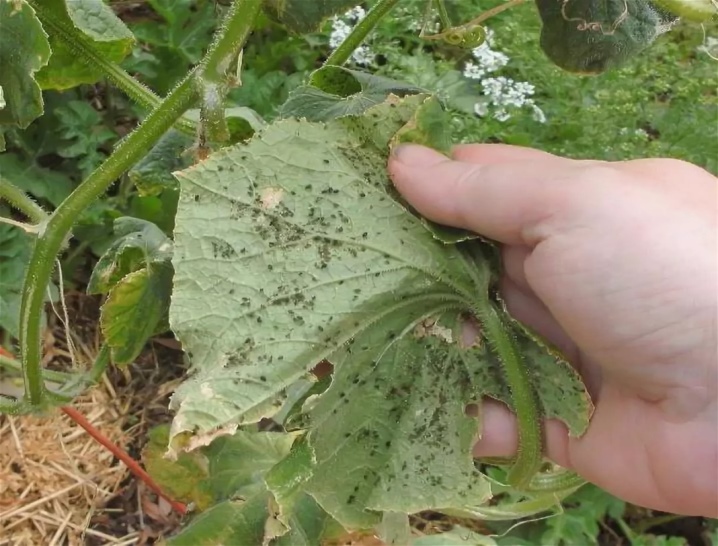
Recipes for prevention
You can prevent the appearance of yellowness on the leaves of cucumbers using a variety of solutions.
Milk soap
To obtain it, 1 liter of yogurt or milk, a spoonful of laundry soap, crushed with a grater, as well as 20 drops of iodine are added to a bucket of water.
They begin to process immediately after the appearance of the first leaves and perform the procedure every 9-10 days.
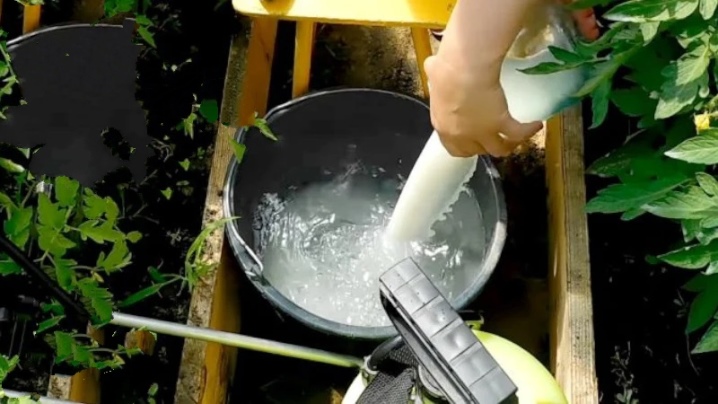
Bread with iodine
A loaf of rye bread is placed in a bucket filled with water, kneaded and left for half a day. Then add 40 drops of iodine, filter and spray greens. This must be done every two weeks. You can use rusks instead of bread.
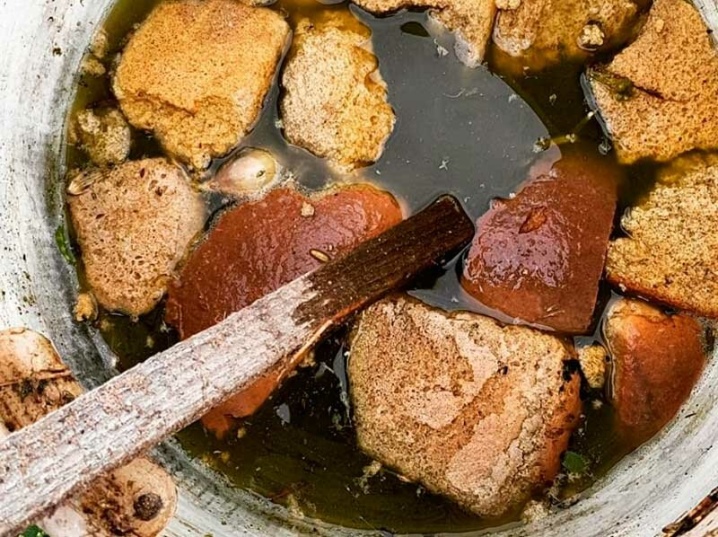
Onion peel
Place 1 tbsp in a 5-liter pot of water. l. chopped onion husks, boil for 2 minutes, leave for several hours and pour a liter under each bush.
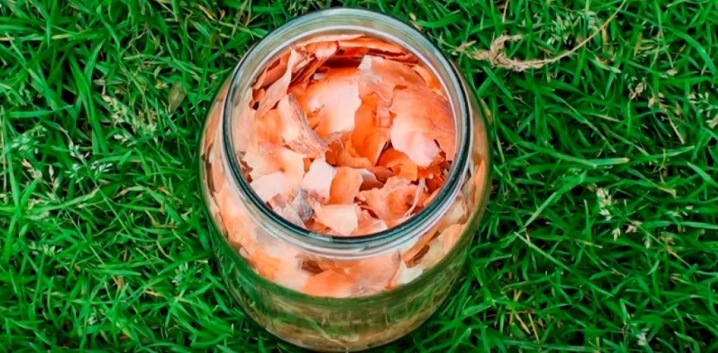
Also, to prevent yellowness, you need to observe crop rotation and plant cucumbers in the garden after tomatoes, beets and legumes.
You cannot grow cucumbers in one place for more than 3 years. In addition, plants must be weeded regularly, plant residues must be immediately removed from the garden, and bushes affected by the virus must be burned.
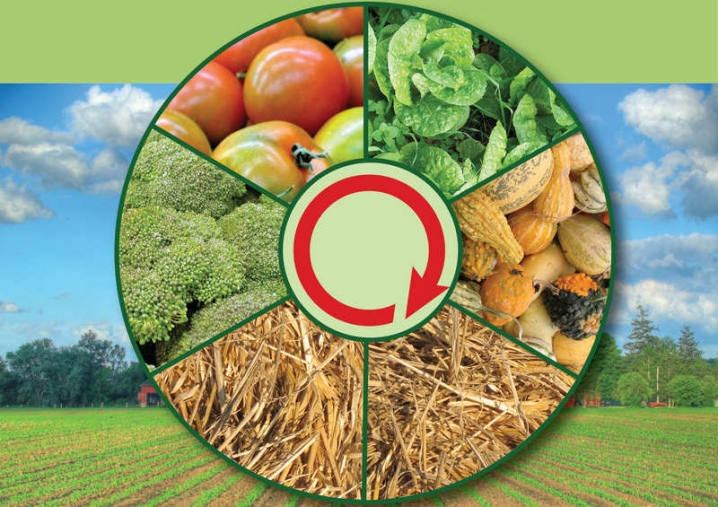













The comment was sent successfully.